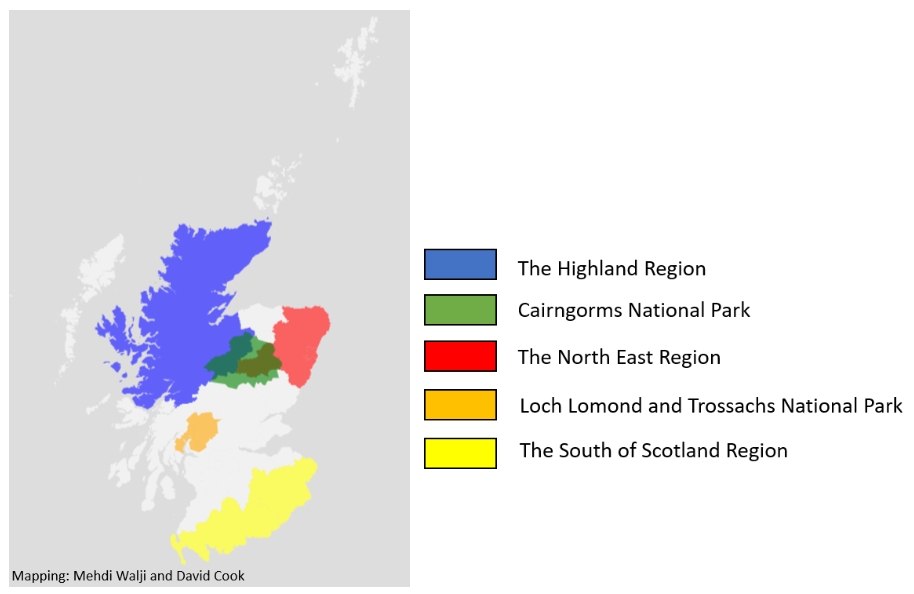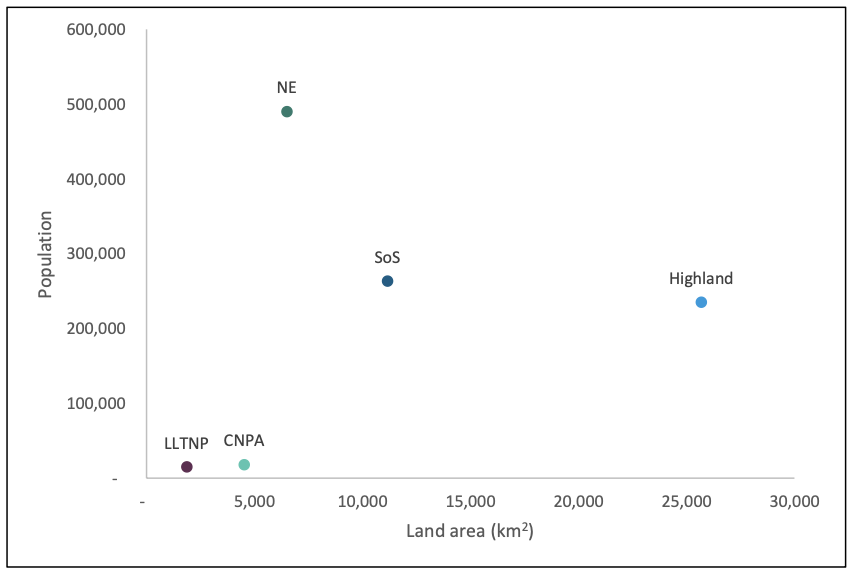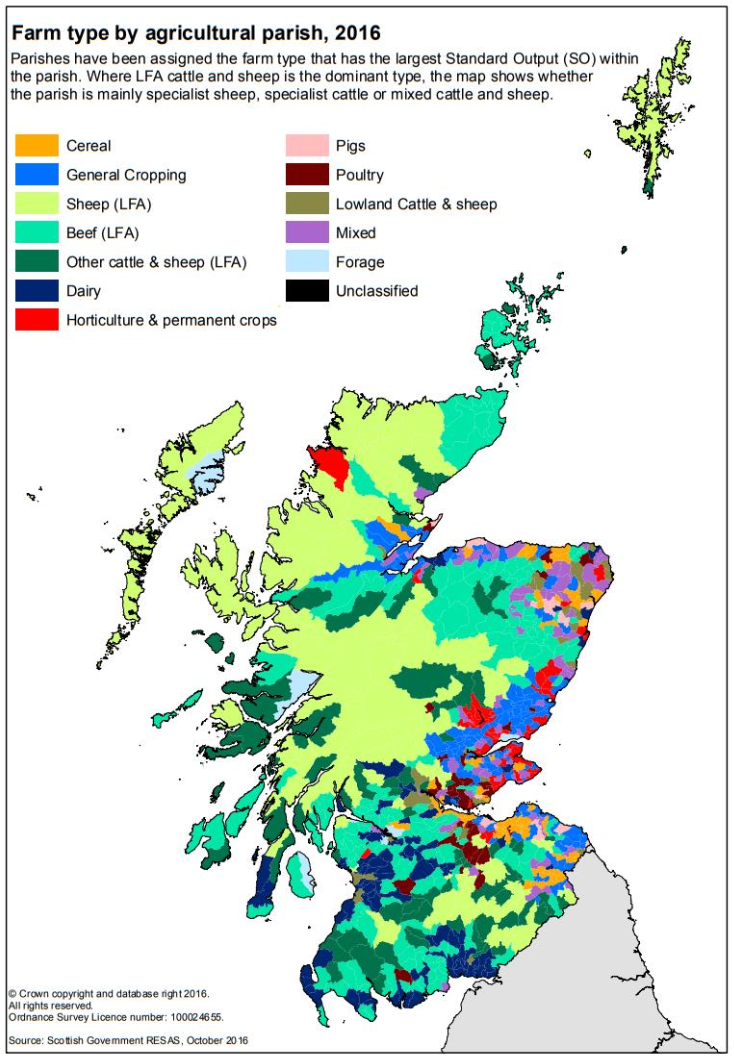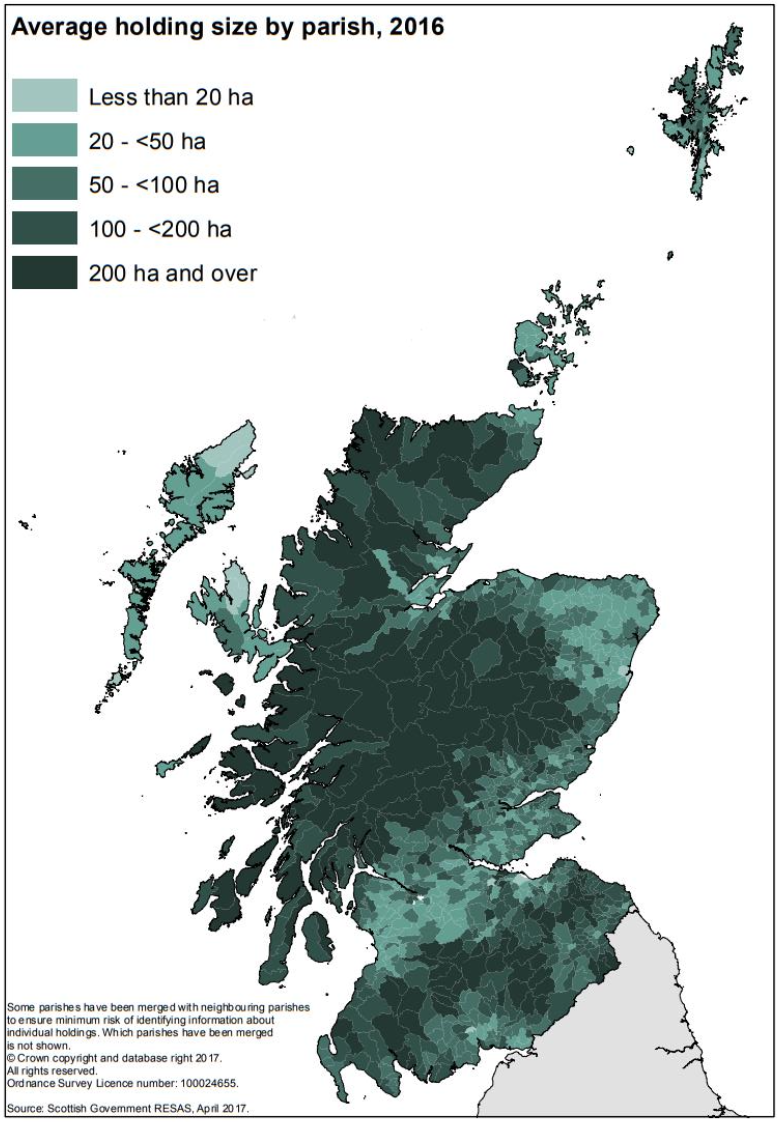Regional Land Use Partnerships: phase 1 process evaluation - final report
The Regional Land Use Partnerships (RLUPs) evaluation report considers the lessons learned from the Year 1 (2021 to 2022) pilot process. The report was completed by SAC Consulting and outlines key early findings from RLUP pilot establishment.
Appendix A: Pilot region overviews
This section gives some further context on the five pilot regions that are currently running, 2020-2023. While the body of this report focused on the pilot process overall and aggregated the results of the individual pilots to draw out common issues and potential solutions, this section gives some insight into the wide differences between these regions.

These five regions each expressed an interest in being an RLUP pilot and were accepted. These regions contain a diversity of landscapes and land uses, including urban, peri-urban, arable, upland, peatland and forestry[9] (see Figure A1). Each region also has a different composition of social groupings and institutions including communities, enterprises, and partnerships across Scotland (see Figure A2). This diversity is an essential asset to the pilot process, as the unique barriers and enablers encountered within each landscape should drive innovative solutions which offer insights for the future of the RLUP policy.



Contact
There is a problem
Thanks for your feedback